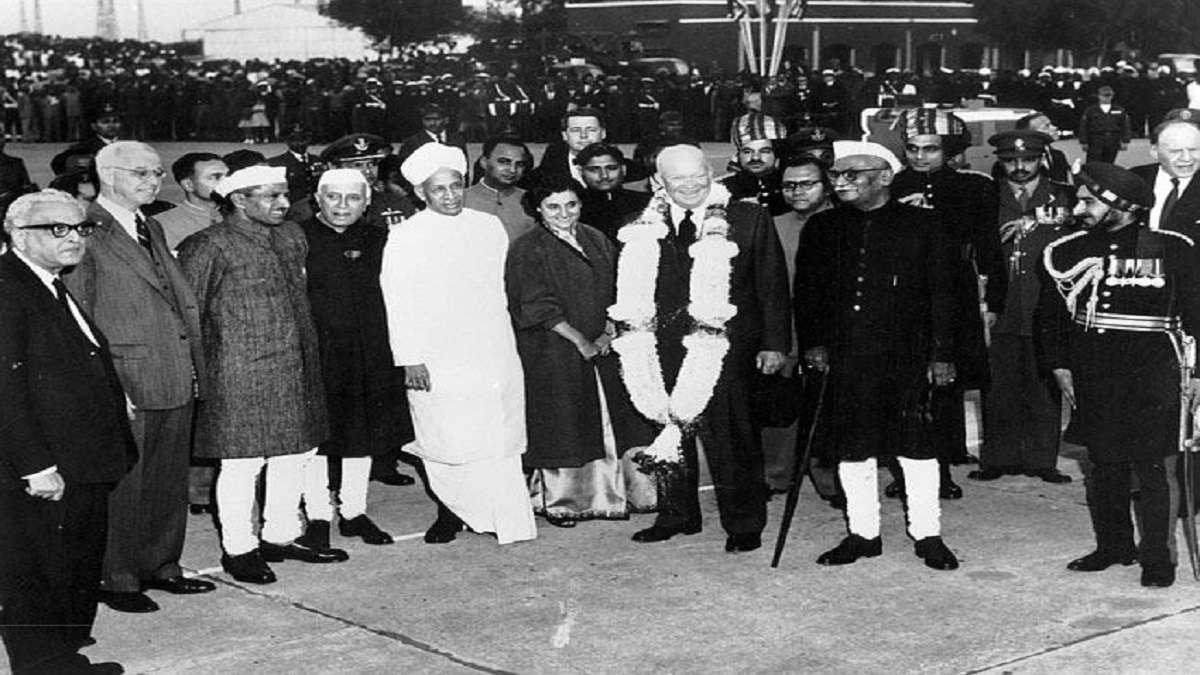
Even as the February visit of President Donald Trump appears to have been by and large successful, one element was found missing. The much publicised welcome by the millions. Initially, one thought millions would be just a form of metaphorical expression, but its repeated usage in the build up to the visit indicated much more than that and perhaps a certain degree of expectation. Once upon a time, there was indeed such a welcome by a million and more. That was 60 years ago. The visit of Eisenhower, the first US President to set foot on Indian soil on 9 December 1959 saw unprecedented and unmanageable crowds all along his route.
In fact, wherever the US President went during his brief stay in Delhi there was a sea of humanity to welcome him. Coming at the height of the cold war and a few years after the historic visit of Bulganin and Khruschev, comparisons would have been natural. As such, the mobilisation of crowds was also seen as a part of the cold war one-upmanship. Eisenhower had left Karachi, then capital of Pakistan, on the morning of 9 December for Kabul, where he stayed for a few hours, reaching New Delhi in the late afternoon. It was literally a case of breakfast in Karachi, lunch in Kabul and afternoon tea in Delhi, which had to be skipped. Those days all the ceremonials, which are now held in the forecourt of Rashtrapati Bhavan, used to be at the airport itself.
Additionally, heads of all the foreign missions in New Delhi were also invited and presented to the visiting dignitary. Normally, gatherings on such occasions at the airport were restricted to about 400-500, but for the welcome of Eisenhower there were more than 15,000 people. One of Eisenhower’s engagements was the inauguration of the World Agricultural Fair at the exhibition grounds, which in later years came to be known as Pragati Maidan. This might have perhaps prompted the organisers to include a large number of villagers from the neighbourhood as a part of the route lining welcome. Apparently, things went out of control as throngs of villagers came on camels and bullock carts, and began to crowd the route from the morning itself. In fact, all those going to the airport for the arrival reception were considerably delayed on this account and managed somehow to reach in time.
It was early winter and the sun was quite hazy, with dusk approaching fast as the motorcade left Palam. It was a very unusual sight as Jawaharlal Nehru and Rajendra Prasad flanked Eisenhower in the middle on the rear seat of an open Cadillac. With crowds of 8/10 deep spilling on the main carriageway on the route, the scenes outside were chaotic. The motorcade had to virtually crawl all through and a journey which should have taken not more than 45 minutes took more than two hours. Those days the ceremonial route used to be through Connaught Place and it was here that the crowds were the thickest and the motorcade virtually came to a halt as the VIP car was surrounded by the enthusiastic public. It had also become quite dark despite the special decorative and fluorescent lighting all along.
As the police arrangements were unable to handle the situation adequately, out of sheer exasperation, Nehru is known to have jumped out of the car near Rivoli Cinema on Irwin Road (now Baba Kharak Singh Marg), to make way for the motorcade. The incident is recounted by Eisenhower in his memoirs, The White House Years: “Pandit Nehru dismounted and forced his way to the front of the car. That is where he used the baton, which he always carried with him but the crowd did not respond. Distinguished man of non-violence on this occasion used a stick to clear the way ahead.”
Though totally unruly, it was a friendly crowd, showering the motorcade with flowers, bouquets, garlands and petals. So much so that when the motorcade reached Rashtrapati Bhavan, the VIP car had a layer of more than six inches of flower petals. More or less same scenes were repeated during the visits to Rajghat and Delhi University where Eisenhower was given a honorary degree. After the visit, Government of India asked B.N. Jha, the then Union Home Secretary to inquire into the handling of the arrangements and make recommendations so as to avoid such chaos during future visits. Way back in 1983 when I was posted as Deputy Commissioner of Police (Traffic), I had an opportunity to go through this report in which several useful suggestions were made including the one for creating an alternate route to Palam Airport, resulting in laying out of the present Rao Tula Ram Marg in South Delhi area. Dr K.K. Paul is a former Governor and a Senior Advisor at the Pranab Mukherjee Foundation.